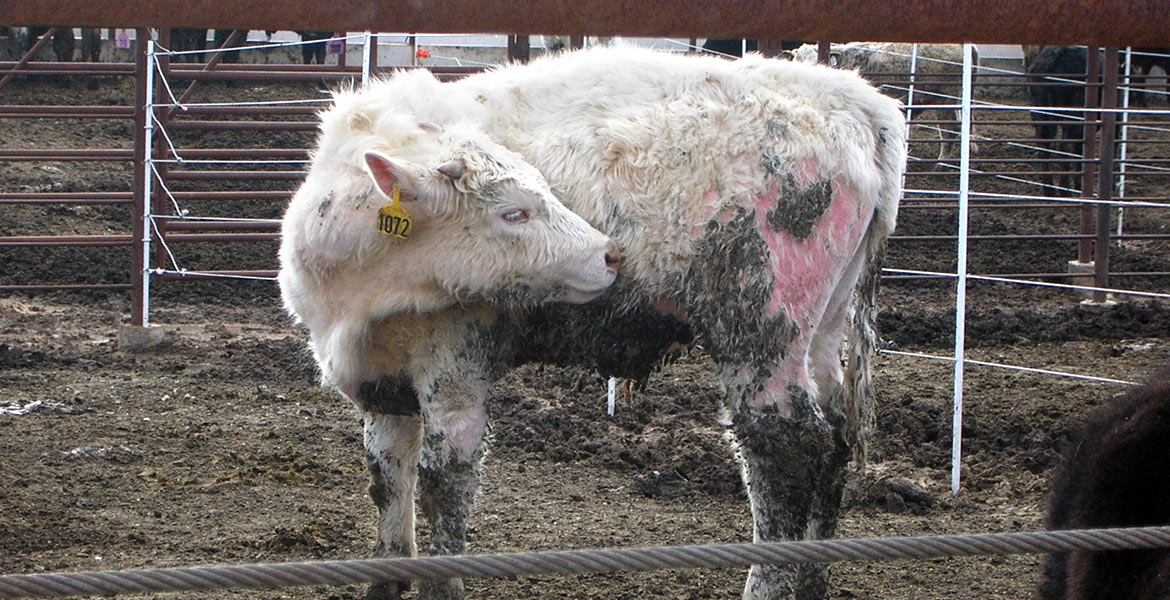
Treating lice: A wintertime threat
Tuesday, January 15, 2019
The cold of winter doesn’t stop all the external parasites that can torment livestock. While flies and ticks are mainly warm-weather pests, we still have lice to contend with in the winter.
Lice are wingless insects that live on the skin of various species, including horses, cattle, sheep, goats and, of course, humans. Lice are spread by direct contact between animals but are species specific. In other words, lice cannot be transmitted across species. Lice on cattle cannot affect a horse, sheep or goat and vice versa. And the best news: lice that affect livestock cannot infest humans.
There are two main families of lice — biting (or chewing) and sucking lice.
Biting lice feed on skin and skin secretions, while sucking lice have a long, piercing mouthpiece that allows them to draw and feed on blood.
Lice infestations cause intense itching. Livestock can spend a tremendous amount of time rubbing and licking in an effort to alleviate their discomfort. They can spend so much time doing this that it affects their feed intake, feed efficiency, weight gain and growth, which can result in a significant financial hit for the enterprise. Further, because of their ability to drain blood, sucking lice can cause severe anemia and devastate young calves.
Lice thrive in winter. Their survival and transmission is enhanced by long-hair coats and huddling behavior.
The first indications of lice infestations in livestock are excessive rubbing (on things such as fence posts and buildings) and licking. Remember that healthy cattle naturally groom daily, licking their sides and upsweeping the hair.
Lice, however, will induce rubbing and licking to the point of removing hair and damaging the skin beneath. The extreme grooming can produce hairballs, which can cause obstructions in the stomach and intestines of infested animals.
Patchy hair loss typically starts on the neck and back, extending down the sides of the body and legs. Animals should be examined along the topline to look for the lice or their eggs, which are most easily seen on black hair.
Veterinarians do the Scotch tape test, where they stick a piece of tape onto the animal to pick up any lice that are present. Examining the lice on that tape under a microscope shows the mouthpiece and identifies the offending lice as biting or sucking. Classifying the lice found helps guide treatment.
The animal itself serves as the only source of food for lice, and a louse cannot survive off the animal for more than a day or so. Therefore, the primary focus for control of these parasites is the animal rather than the environment.
Caveats to this include situations where cattle may be sharing tack or bedding, as happens with exhibition animals. Moving a halter from one animal to another or placing an animal in a stall just vacated by another animal are examples of how transmission occurs aside from animal-to-animal contact.
Products to control lice include dusts, sprays, pour-ons and charges for back rubbers. Consider the number of animals, the facilities they’re in, labor available to apply the solution and the cost when selecting the treatment.
No treatment kills the eggs, so a repeat treatment is necessary once the eggs have hatched. This second treatment, two to three weeks after the first, helps break the life cycle and stops future generations from coming. All animals in the group need to be treated, regardless of how many are showing signs of infestation. Be sure to follow the manufacturer’s instructions for product use and follow all withdrawal times.
Some injectable and pour-on dewormers, like ivermecin and its cousins doramectin and moxidectin, also kill lice. In the wintertime, worm control is not a high priority because the conditions are not right for transmission. Treatment with dewormers when transmission is low encourages the development of drug-resistant worms.
In addition, injectable products only kill sucking lice — biting lice do not ingest blood, which contains the drug.
Several years ago, I was called to look at a group of stocker calves that were losing their hair and scratching constantly. (The accompanying photo is one of those calves.)
This group had been given an injectable dewormer with activity against sucking lice and yet they were showing clear signs of lice.
We ran a few through the chute and did the Scotch tape test. When we looked under the microscope, they were all biting lice. Because the anti-lice medication was in the blood, it wasn’t getting to the lice.
We recommended that all the calves be put through the chute and poured with an insecticide. The problem cleared. For all these reasons, I generally recommend wintertime lice control using pure insecticide products applied topically in some fashion, saving your dewormers (and their associated cost) for timely use in the spring and fall.
Veterinary Viewpoints is provided by the faculty of the OSU Veterinary Medical Hospital. Certified by the American Animal Hospital Association, the hospital is open to the public providing routine and specialized care for all species and 24-hour emergency care, 365 days a year. For more information, visit www.cvhs.okstate.edu or call (405) 744-7000.
